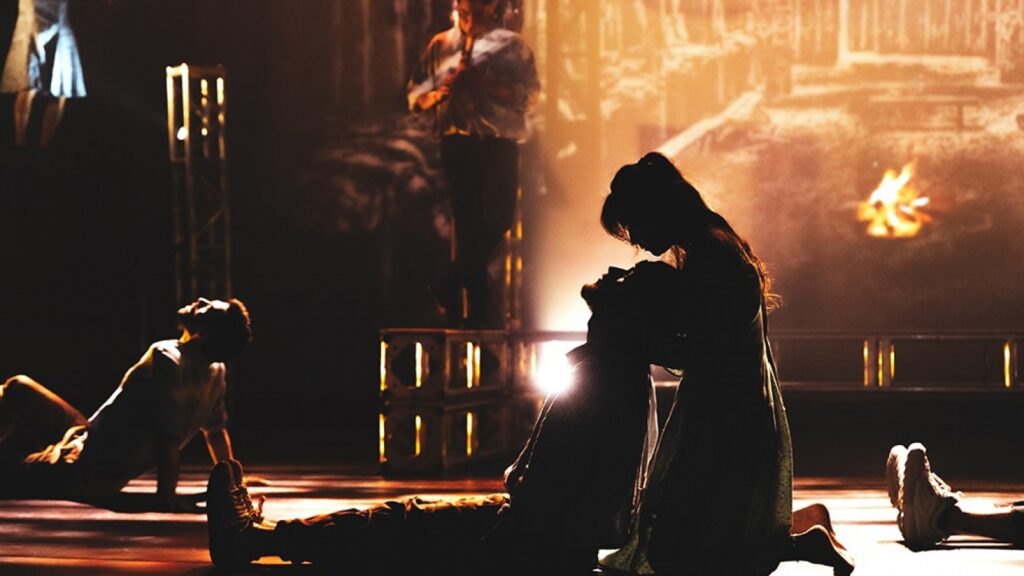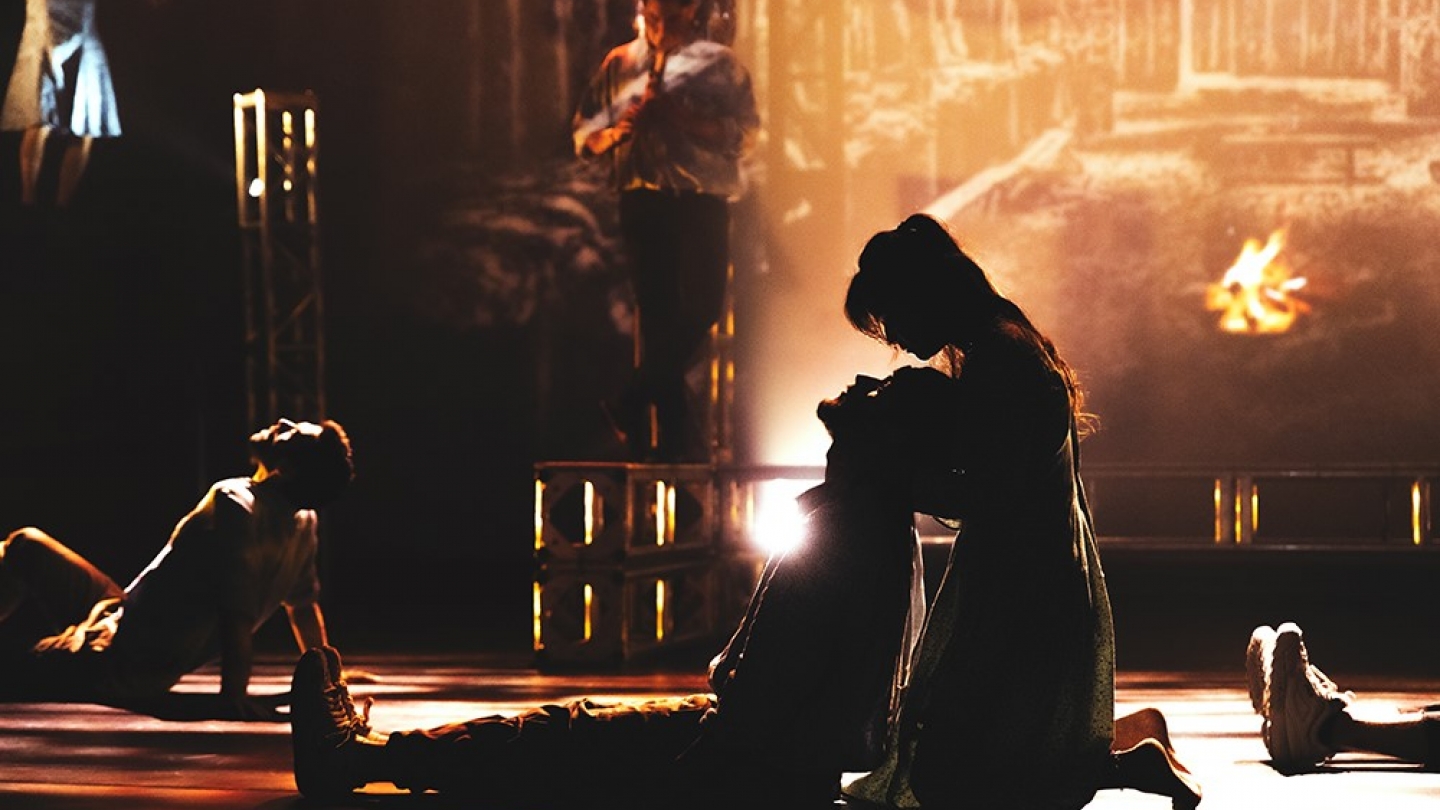On January 21, 2023, I attended the National Art Centre to watch a powerful live production called Sky Dancers. The show blended dance and other visual elements to tell the tragic story of the Quebec Bridge Disaster of 1907, an event that claimed the lives of thirty-three men from the community of Kahnawake. Sky Dancers was directed by Barbara Kaneratonni Diabo, the great-granddaughter of one of the ironworkers killed in the bridge disaster. The show beautifully captured the resilient spirit of Indigenous culture and invited viewers to bare witness to many important themes. In one scene, a woman sat in a chair, slowly rocking and cuddling her baby. The emotions were palpable when the next sequence showed the same woman clutching an empty baby blanket while packing a small suitcase of infant clothing and prized possessions. There were many ways to interpret this dramatic scene but I felt an overwhelming sense of sadness as I thought of the widespread, systemic displacement of Indigenous families and how our dark history played a role in the erasure of Indigenous culture. Linked is the issue of intergenerational trauma and the need for truth before reconciliation as we are still uncovering mass graves sites across Canada, reminding us of institutional abuse within the residential school system.

Before the show began, a formal land acknowledgment was read to the crowd, allowing us to reflect on the history of colonialism and continued practices of settler colonialism that negatively impact Indigenous communities in present day Canada. When I hear a formal land acknowledgement, I think about the historical timeline of colonization and the unfair treaties which displaced Indigenous families, causing irreparable harm including: Ongoing Colonialism, Impacts of Capitalism and Impacts of the Indian Act.
There are many Indigenous activists currently working to protect the lands and waters of Canada, some of which were highlighted in Wet’suwet’en Land Defenders. The story was highly impactful and encouraged viewers to rethink how the land had been traded in the past and called for the return of land through different forms of resistance. One example of resistance is through the legal remedy of injunction that aims to stop an unjust action or the unlawful use of land. There have been many high-profile disputes in recent years surrounding the unequitable use of lands for man camps and pipelines, creating a growing call to return lands not governed by state treaties.
Capitalist interests are often in direct conflict with the land-based systems of traditional Indigenous law. The unfair treaties of the Indian Act aimed to control the lives of Indigenous people and have created a number of hardships. Modern day treaties have seen several provisions including section 10 of the Indigenous Act, relating to governance and self-determination rights but remain problematic. The practice of high artic relocation for example were forced relocations under the guise of heightened living conditions with access to hunting lands that would provide a self-sustaining lifestyle. One benefit offered was the abundance of seal hunting and opportunity to participate in the global trade market. The Angry Inuk story by Alethea Arnaquq-Baril touches on the political fallout of seal hunting in Canada and unjust governance of Indigenous communities who should be free to hunt within their lands for sustenance. The film focuses on challenging the anti-seal hunting narrative of animal rights activists and amplifies the lived experiences of Indigenous land guardians, the original owners and hunters of these lands.
There has been growing public outrage regarding the disturbing prevalence of missing and murdered Indigenous girls and women in Canada. This topic is discussed in the article Red River Women by Joanna Jolly which centers around the alarming rate of disappearances and violent attacks against Indigenous women in Winnipeg. One important fact that is brought to the attention of the reader is how so many of these women were vulnerable, meaning at-risk for various forms of maltreatment. For example, one victim named Claudette was a twenty-one-year-old woman who had just given birth to her fourth child and was still experiencing post-partum bleeding when she was sexually assaulted. Other victims were sex trade workers, some had been raised as children in the foster care system, others were teenaged runaways trying to reunite with lost family members. It is through their shared vulnerability that these women were either exploited, assaulted, neglected, missing or murdered. The tragedy of these cases represents a great failure within our society that brings to the forefront a gross inequality as seen in the response from law enforcement to investigate these cases effectively and prosecute the offenders swiftly.
It is with an intersectional feminist lens that I view all acts of oppression and violence against women as unacceptable. One question that keeps popping up in my mind as I learn more about Indigenous history and activism is how I can assist with the reconciliation and healing process as a non-Indigenous person? Harsha Walia’s article, Decolonizing Together was very helpful in making me understand the complexity of solidarity and the importance of self-directed, Indigenous-led activism. If I take only one thing from the article, it would be that learning is a form of activism itself but to truly show solidarity, I will need to understand that my own privilege came at the expense of others, specifically gained through the illegal settlement and exploitation of Indigenous resources.
Home
About
services
stories
shop
resources
contact
MENU
We like to think of Urban Runaway as a knowledge-sharing community where accessing on-demand support is as simple as making a heart-to-heart phone call. We’ve created a bunch of amazing programs and resources to inspire you.
GRAB THE urban
free
runaway toolkit
Inspiration to help you start your own heart project.
